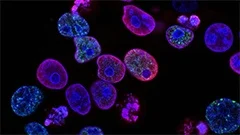Introduction
The study of microbial growth and its control is a fundamental aspect of microbiology, providing essential insights into the behavior of microorganisms and their interactions with their environment. This comprehensive course offers an in-depth exploration of the mechanisms governing microbial proliferation and the strategies employed to regulate it.
Key Concepts in Microbial Growth
Population Dynamics
Exponential Phase
The exponential phase is a crucial period in the life cycle of a growing microbial population, during which cell numbers increase exponentially with time. This growth pattern can be described mathematically using the logarithmic function.
Lag Phase
Following the introduction of a microorganism into a new environment, there is often an initial period called the lag phase. During this stage, cells acclimate to the new conditions and prepare for active growth.
Stationary Phase
Upon depletion of essential nutrients or the accumulation of toxic metabolic byproducts, a microbial population may enter the stationary phase. At this point, cell division ceases, but cells remain viable for some time.
Factors Affecting Microbial Growth
Nutrient Availability
The availability and accessibility of nutrients significantly influence microbial growth rates. Carbon, nitrogen, phosphorus, sulfur, and trace elements are essential components required for cellular metabolism and growth.
pH and Temperature
Optimal pH and temperature ranges vary among different microorganisms. Acidophiles thrive in environments with low pH values (<5), while alkaliphiles prefer higher pH levels (>9). Similarly, psychrophiles grow best at temperatures close to freezing, whereas thermophiles require temperatures above 45°C for growth.
Osmotic Pressure and Redox Potential
The osmotic pressure of the environment and the redox potential (Eh) can also impact microbial growth. Some microorganisms are capable of surviving in hypersaline or anoxic environments, demonstrating remarkable adaptability.
Control Strategies for Microbial Growth
Physical Methods
Physical methods used to control microbial growth include heating, cooling, freezing, irradiation, and filtration. These techniques can either kill or inhibit the growth of microorganisms by altering their physiological state or disrupting their cellular structures.
Chemical Methods
Chemicals such as antibiotics, biocides, and disinfectants are often employed to control microbial growth. These substances act by inhibiting essential cellular processes, damaging membranes, or interfering with DNA replication and transcription.
Biological Control
Biological control strategies involve the use of beneficial microorganisms (e.g., probiotics) or natural antimicrobial compounds produced by other organisms to inhibit the growth of harmful microbes. This approach takes advantage of the competitive interactions and synergistic effects among different microbial species.
Conclusion
Understanding the various factors influencing microbial growth and the strategies employed to control it is crucial for applications ranging from food preservation and biotechnology to public health and environmental protection. By gaining a deeper insight into these concepts, students can contribute to advancements in microbiology and its practical applications.
MCQ: Test your knowledge!
Do you think you know everything about this course? Don't fall into the traps, train with MCQs! eBiologie has hundreds of questions to help you master this subject.
To go further...
These courses might interest you
Create a free account to receive courses, MCQs, and advice to succeed in your studies!
eBiologie offers several eBooks containing MCQ series (5 booklets available free for each subscriber).







